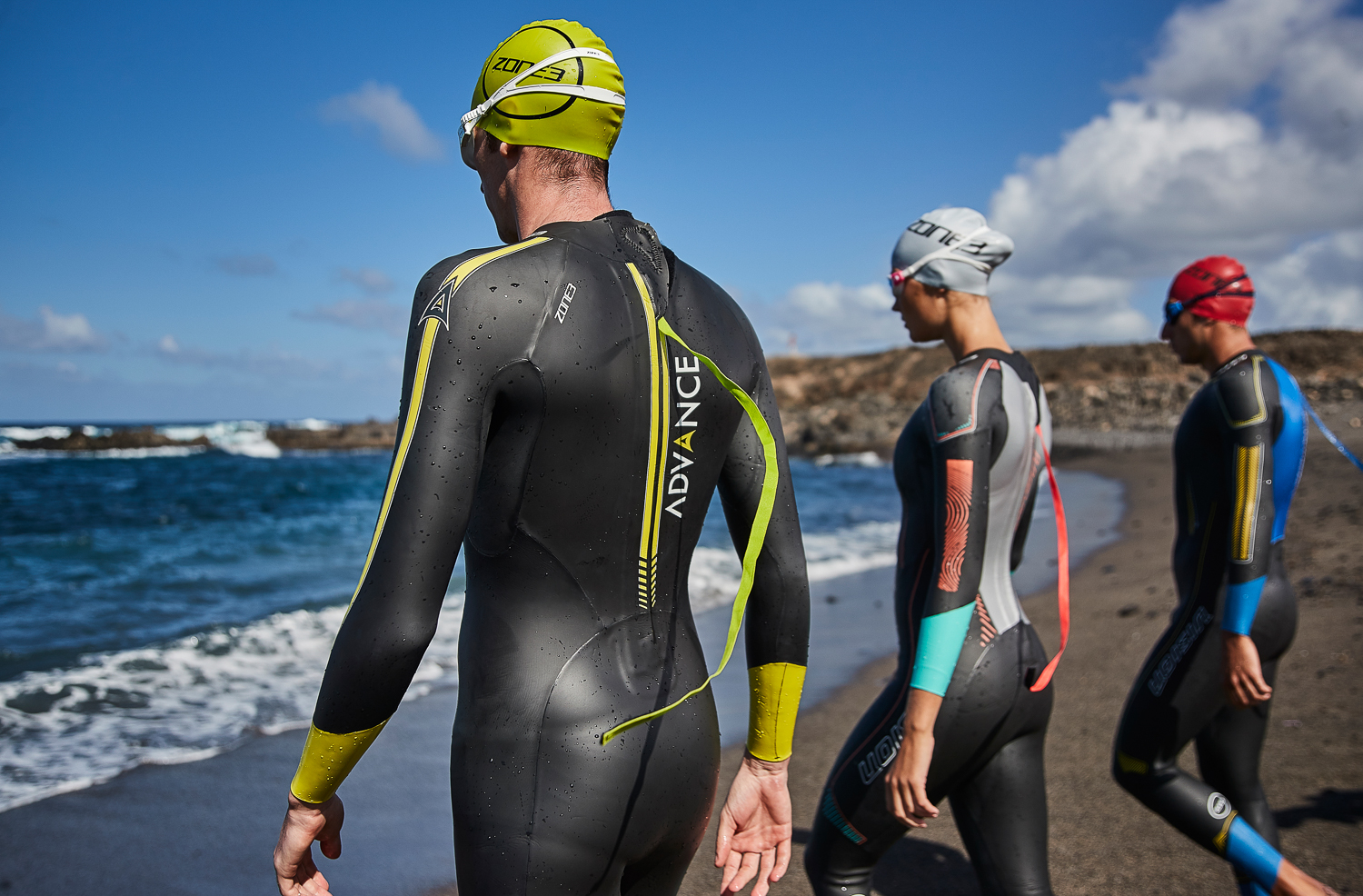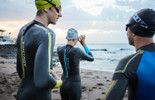7 TOP TIPS FOR BUYING A WETSUIT
Posted by Toby Dickson on 12th Sep 2018
If you are in the sport of TRI for the long term, sooner or later, you will be buying that wetsuit. Even if you venture from the colder climes and are quite comfortable swimming in cold water, there will be times when it might be compulsory to wear one at certain race events. Often the cost factor is one that determines which direction you will go in when considering the purchase of a wetsuit. There is the option of renting or borrowing one for a once-off event, which is totally understandable. As mentioned before, if you take up the sport a little more seriously, a wetsuit purchase becomes quite important going forward. We list some tips you might want to take heed of when on the prowl for a neoprene body-suit.

1. More expensive is not necessarily better.
For the average triathlete who considers their swim to be the worst discipline, an entry level suit will do just fine. The cheaper entry level suits are often thicker and more-hard wearing which means, if you look after it, you get more wear and tear out of the suit than the higher end suits that are made of less pliable/softer materials.
2. Your swimming experience is important here.
If you consider yourself a half decent swimmer, who has come from competitive pool swimming perhaps and now wants to partake in the sport of TRI, you may want to spend a little more and go mid to higher-end. Why? Simple, the materials are softer meaning more flexible on the shoulder and upper body areas. They are also easier to get on and off which is crucial in T1 when you are looking to gain and not lose seconds. The better swimmers will want to spend extra on a wetsuit – don’t buy cheap at first – and then find you need to upgrade later on.
3. Buy your wetsuit when you are at your smallest.
A suit needs to fit super tight so perhaps buy one when you are at your thinnest. Possibly before the start of each summer or halfway in between. A suit will become "softer" and easier to get into as it takes on some wear-use. As long as it is not strangling you around the neckline and you can breathe comfortably, then the suit is right for you. The sizing charts are often very accurate and if you stick 99% to these, you will end up buying the suit that is made for you unless you are out of proportion for some reason.
4. Don’t confuse claustrophobia with the suit being too tight.
We have seen many a triathlete panic when they put on the suit. Not because it’s necessarily too tight but because they almost suffer from some form of claustrophobia. Using a suit and getting comfortable in one requires time and training in one. So take your time and use as often as possible. In time, with the correct mind-set in place, the suit will become something you start enjoy wearing as opposed to hating. Another tip here is to ensure that you’ve got the suit on correctly, as the suit may feel too tight if it isn’t on right.
5. A good suit will make you swim faster.
For a fast pool swimmer, we estimate at least 5 seconds per 100m faster with the suit on. The less accomplished swimmer might benefit to the tune of 10 seconds plus. That is a lot of speed around the swim course with no extra effort put in. The more comfortable you feel in the suit, the more you will enjoy it with the benefits from the extreme buoyancy that each wetsuit provides.
6. A triathlon wetsuit is totally different to a scuba or surfing wetsuit.
Don’t get too confused. A triathlon wetsuit is made to keep the water out and ensure you are fast. A surfing suit, on the other hand, is made to take water in and heat it up so you stay warm. They are heavier and rest assured you will not swim well in one. Rather spend the few extra bob and buy a quality TRI wetsuit.
7. Compare pricing and take advice from those that have been in the sport fora good few years.
Their advice could end up saving you money.
Are you interested in the new 2018 Ranges from the main triathlon brands? Follow the links below to discover more:

